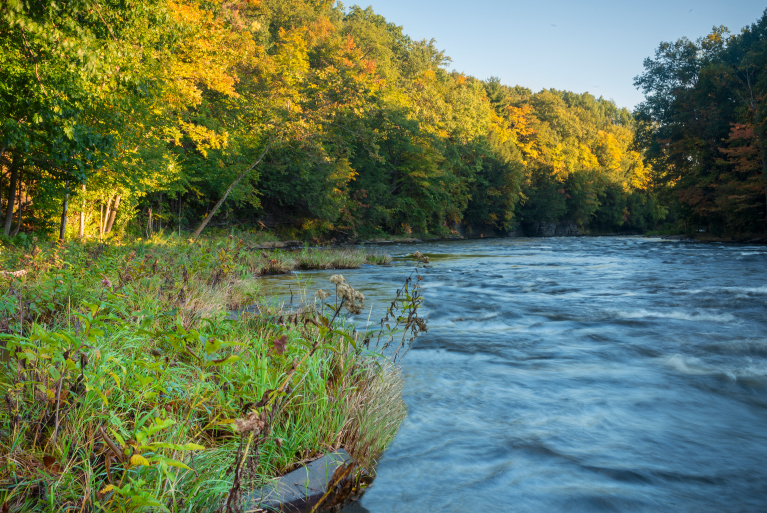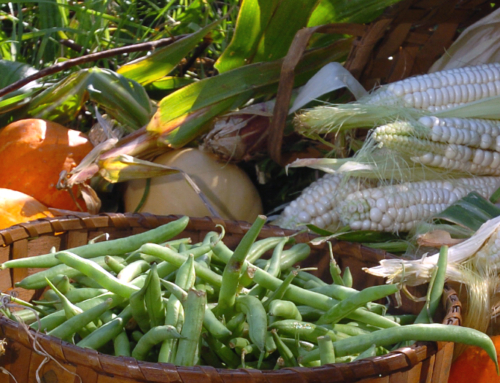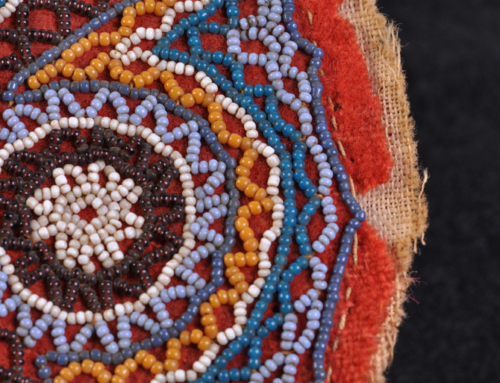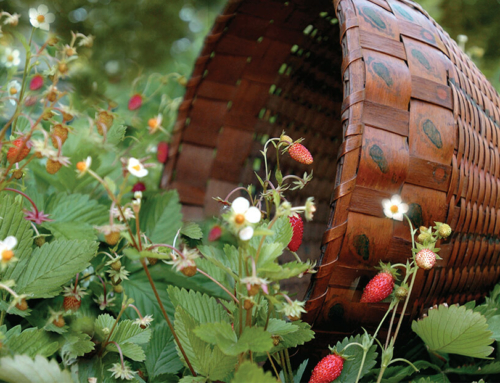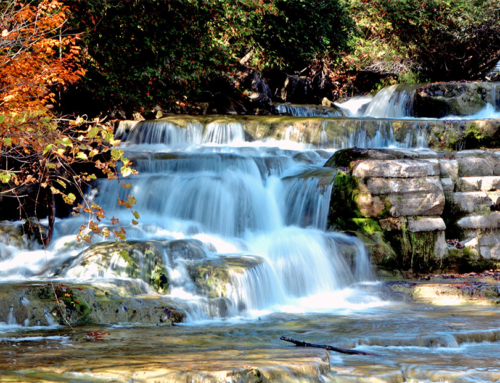Traditionally, Oneida fished for sustenance primarily during the fall and the spring spawning seasons. Since rods and hooks were unknown at the time, Oneida relied on corralling the fish in the water using netting and stockade gates. The gates would capture the larger, adult fish while allowing the smaller fish to pass through, assuring a catch for the next season. Once the fish were successfully corralled, they would be speared or clubbed.
This was a community event that lasted until the spawning season ended and everyone was involved. Men, women and children each had a role. While the majority of the fish were cleaned and hung to dry, the immediate meal would be fish soup. It was a practical recipe, incorporating the fresh fish with vegetables left over from the winter.
Once the fish dried, it could be kept for a long period. Pieces of the meat could be flaked off and eaten, or grounded up into smaller chunks. The ground fish was commonly used to flavor soup and provide needed protein.
Every part of the fish was used. The eggs were squeezed out of the fish and placed back in the water. Inedible parts – heads and fins – would be used as compost to fertilize next year’s crop.
But the fishing season was not all work. Oneida had ceremonies celebrating the catch, too. The Fish Dance, and other dances, were done to give thanks to the Creator for the bounty. The fishing season was an important event because it provided up to six months’ worth of food.
While Atlantic salmon was the primary spawning fish corralled, other spawning fish – such as trout and steelheads – were important to the diet as well. To supplement the fish caught during the spawning period, Oneida would seek fish that dwelt in smaller, shallower streams. The method of catching this type of fish was much different from that employed for the spawning variety.
Night fishing using torchlight was the favored technique. The strategy was simple and effective. Two men would stand upstream in the water with two others several hundred yards downstream. The first two would beat rocks with sticks and slowly move downstream. This would force the fish downstream while the second set of men would chase them back upstream. Drawn to the light and frightened by the noise, the fish would be trapped between the four men and forced into one area, making it easier for the fish to be speared.
So many things have changed since Oneida ancestors fished the waters in their ancestral homelands. Traditional fishing has virtually disappeared, simply because corrals and netting are no longer used. But remnants of the old ways still exist as Oneida continue to dance the Fish Dance, giving thanks to the Creator for either one fish or many.


